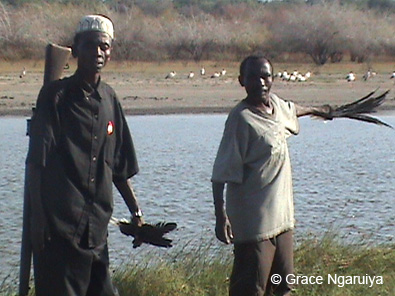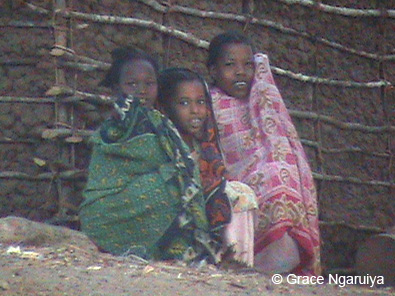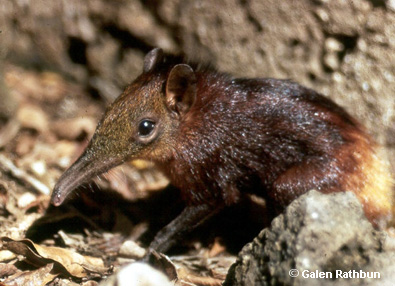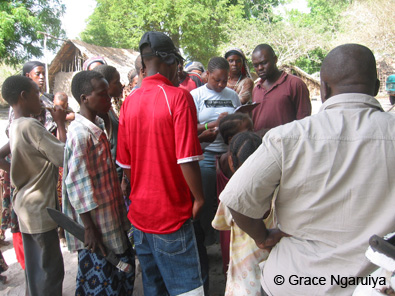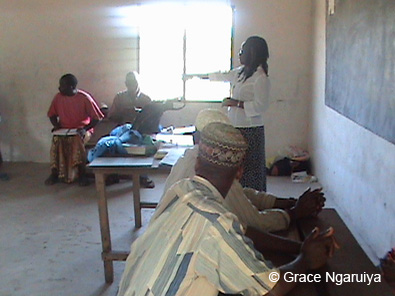Our Kenyan EDGE Fellow, Grace Ngaruiya, studies the Endangered golden-rumped elephant shrew (Rhynchocyon chrysopygus). She has carried out transect surveys in the Boni forest (for more information on the site see previous blog) and asked local people whether they can identify different elephant shrew species as being found in the forest. Grace sent us this information about the Awer, or Boni, people who live there:
The Awer live in Lamu and Ijara districts. They are called Boni, meaning people of a lower caste system, by the Somali neighbours. They are hunters and gatherers and live in the Boni and Dodori Forest Reserves. They are thought to be distinct relatives of the Oromo and the Watta who originally migrated from Ethiopia. The Boni also live in Hola area of Badaade district in Southern Somalia.
The resident population in Kenya is about 2000 people according to the 1999 census. They are indigenous forest dwellers but practice shifting cultivation (good for conservation) but to a small scale because the crops (maize, beans, peas, bananas, paw paws, cassava, mangoes, pumpkins, and cashew-nuts) are usually destroyed by wild animals like baboons, elephants and buffaloes.
The Boni are well adapted to their environment which they have occupied for thousands of years according to archaeological findings. They coexist well and are generally healthy, happy and peaceful people. They migrate freely through the forests and between the four major settlements in the forests namely; Mararani, Mangai, Basuba and Milimani.
They are muslims and this factor has contributed greatly to conservation in that unlike in Arabuko-Sokoke (a site known to have a population of golden-rumped elephant shrew) where almost all animals are considered good for eating, the Boni only eat hoofed animals and this is done in small quantities since it’s for subsistence use only. The only sign of disturbance I saw were the widespread forest fires that they use to reduce tsetse flies and also encourage growth of fresh grass for wild animals. They do not keep any cows but are starting to come up by keeping goats.
They cite previous cases of insecurity from “Mashiftas” but that has been controlled and it has been peaceful for four years now. (We were able to put up our tents and sleep comfortably except for the various animal calls i.e. hippos, elephants, hyenas, owls and a leopard.)
The Boni face the following threats:
– Forest destruction by illegal timber loggers from Lamu District which threatens their livelihood e.g. certain tree species are disappearing as they now travel long distances to collect food from the forest
– Dwindling non-timber forest products such as honey, herbs, some special roots
– Lack of documentation of their culture and their forest management systems
Interventions aimed at helping Boni:
– Establishment of environmental enterprises such as beekeeping – the project is implemented by Womankind Kenya, Ijara office and TEP of Terra Nuova in Basuba and Mangai, a kilo of honey is bought at Ksh.800/=.
– Attempts are being made to document their language i.e. Awer Language Development Project (ALDP). I met with the team and they are developing the Boni dictionary.
– Livelihood improvements – Karen Community Church is involved in sponsoring children to school at a nearby town at Mokowe and also promoting community development.
If you would like to support Grace’s work to conserve the golden-rumped elephant shrew please click here.
